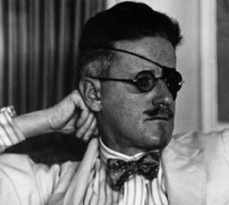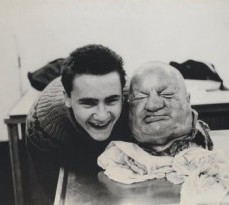Mortality
When faced with the task of finding a common theme for our anthology, we were presented with many options, reflecting the varied range of texts and extracts that we felt inspired to include. However, within the pieces that held a particular resonance we found the common theme of mortality to be the most contracting. Mortality is, of course, a theme that every individual must encounter in his or her life, as no one can escape the certainty of death, and therefore we thought we could take advantage of this universality to create an anthology to which everyone can relate. Naturally, there were problems with this theme, and we were particularly concerned with the morbid implications. Death is of course an issue that can be dark or depressing, and we didn’t want our anthology to inspire feelings of that sort. Therefore, we decided to find works that find the positivity within mortality, pieces that can take hold of the inevitability of death and make with it something uplifting. One can choose to look upon death’s certainty as a cause for sadness, however, if you can accept it, you realise that the life you live is precious, and you must live to its fullest, in spite of the knowledge that you must die.
The extracts we have chosen cover a wide range of genres and cover a time span from pre-world war one Dublin to a futuristic Los Angeles. This allows us to explore Mortality’s omnipresence in society by looking at how various artists across a large time span, with various ideologies, have treated the subject in their work. Due to the enduring quality of mortality as a theme it is not surprising to find that multiple art forms have in some way or other depicted this subject. As a result we took full advantage of the diversity of materials available to us and have included in our anthology: one complete short story; an extract from a novel; an extract from a short story; one poem; one art installation and one clip from a film.
Death’s omnipresence is a motif that has existed in literature and art since time immemorial, ‘memento mori’ imagery such as skulls feature in many works of visual art. To emphasise the positivity we sought to display in our anthology, we wanted to turn this latin phrase on its head: ‘memento vivere’, as a reminder that although death is inevitable, so is life, and you must engage with all of life. The (laughing) heart of our collection, the poem on which we decided upon our theme, is Charles Bukowski’s. The main ideas in the poem are encapsulated in the first lines of the poem: “your life is your life/don’t let it be clubbed into dank submission”. Knowing that you “can’t beat death”, and that it is a certainty leads to a sentiment of really ‘seizing’ life with both hands, living it as well as you can, and enjoying every moment of it. Because of our selection of texts that focus on the positivity of embracing one’s mortality, the idea of ‘memento vivere’ is present in almost all the texts, albeit in some of them this is done very subtly. For example, in ‘The Sisters’ the idea of making the most out of one’s mortal life is presented only at the end of the extract, with the majority of the chosen extract focusing on the morbidity of being worried about mortality. By presenting a somewhat negative outlook on being pre-occupied about one’s mortality, Joyce indirectly points the reader towards the idea of making the most out of mortal life. Similarly, in our clip from Blade Runner the Replicant Roy Batty’s final lines sees him boasting to Deckard that he has “seen things” in his brief lifetime that people like him wouldn’t believe. In keeping with our theme of ‘memento vivere’ Batty’s final rebuke to Deckard is an emphasis on the idea that what counts most is not how much time we have but rather what we do with the time that is given to us.
The cover image that we have chosen for our anthology is a still from the 1999 motion picture American Beauty, in which the character of Ricky records the most banal aspects of everyday life because he believes that there is beauty in the ordinary. In recording a brief moment in time, the plastic bag floating the wind, and finding beauty in this moment, the film shows us that we can appreciate transient and temporary moments, for the precise reason that they are passing and not permanent. We thought that this was relevant to our anthology as the crux of our message lies in the fact that life is fleeting, and it is for this reason that we find it so extraordinary.
In dealing with the theme of mortality, it seemed necessary to explore grief, and the process of readjustment that those affected by the death of a loved one have to go through. Since most of our texts deal with the aftermath of the death of someone close to the protagonist, each of those extracts contains scenes or illusions that portray the various grieving processes. The three most obvious but different examples of grieving can be found in ‘The Sisters’, ‘I’m free’ and in Hotel World. In Hotel World we are presented with the thought process of someone dealing with loss whereas in ‘The Sisters’ we are given firstly, the protagonist’s grief at the possible death of dear friend and then his reaction to the news that his fears have come true. ‘I’m free’ opens with ‘Don’t grieve for me, for now I’m free’ the deceased expresses that death is not something to mourn but to celebrate. Like the birth of a new baby is celebrated so should the departure of a person. They have been called to another path, free from constrains of life. The way the grieving process is presented in these texts are also representative of the various ways people grieve: Hotel World portrays a personal and internalised grieving process (as signified by the use of stream of consciousness) whereas ‘The Sisters’ presents both the social response to the loss of life, as well as the narrator’s personal response to death. The concept of grief is noticeable in its absence in ‘Pipes’, as the narrator of this story, upon passing through the end of life (not identified entirely as “death”, however) the overall feeling expressed is one of relief, rather than sadness. ‘Just Think’ mirror this dismissive approach to grieving and conveys death as a natural, expected part of life.
Death is often conveyed as a negative process, there is the fear of stepping into the unknown. ‘I’m Free’ challenges this popular belief by representing death as a natural exciting process and life as something to break free from. Life is full of rules and regulations; no one is truly free because of expectations, whether it is doing well in school, having a good job or getting married. The only way to break free is to die.
The differences between the personal and social response to death is particularly interesting given how our reactions to death and mortality are bound by social conventions. As mentioned above, we see these differences most clearly in the extracts from ‘The Sisters’ and Hotel World. But this is apparent in the context of this anthology as well; the moment we decided upon the theme of mortality we faced the problem of how to make our anthology appealing to people, whilst dealing with a problematic and difficult subject. We didn’t want people to dismiss the anthology as morbid, or focused on something that they would rather not think about; instead, we hoped that people would be able to relate to the extracts that we chose in some way, and take away an ultimately positive message from the collection.
One of the prevalent themes we encountered when choosing our texts is the simultaneity and the duality of death. Death is both an instance and something eternal. Death is ever-present, and yet it is something no one can experience until its too late, and it happens to them. Despite its omnipresence, death is utterly intangible. Hirst’s The Physical Impossibility of Death in the Mind of Someone Living utilises taxidermy to highlight this simultaneity by suspending his shark in a position as though alive, with its jaws open wide, although it is entirely dead. The commanding and unnerving presence of the shark makes it feel as though it could be alive. Its size makes it impossible to ignore, much like the theme of mortality. Yet this piece can be seen as a celebration of life as well. The shark may invoke threat, danger, and death but as it is immobile and contained. It is the ultimate ‘tamed’ proof of the audience’s capacity to survive.
One of the things we found most notable upon researching the role of mortality in art is that its universality has been harnessed on many occasions to serve the purposes of commercialism. For instance, jeans manufacturer Levis have used Bukowski’s poem in an advert shown in the twenty-first century. The company justified the use by explaining they wanted “to deliver a message of hope and empowerment” [http://www.vadvert.co.uk/marketing/15593-the-levis%C2%AE-brand-reveals-its-first-ever-global-creative-platform.html]. However, this seems contrary to the nature of the poet himself, who would almost certainly have approved the use of his work to sell whiskey or beer, but does not seem to have had any interest in the distribution of denim. It is also significant that Hirst’s piece was sold for over twelve thousand dollars, and he is often accused of copying and mass producing work entirely for profit.
The commercial exploitation of mortality take on an entirely different role in the world of Blade Runner. In this futuristic setting the Tyrell corporation manufactures artificial human beings or Replicants with a very specific life span of four years. The explanation for this is that this limited lifespan prevents the Replicants from overthrowing their human masters, but simultaneously it also means that every company that uses Replicant labour will need to purchase new replicants every four years which naturally results in the Tyrell corporation becoming the richest in the world.
When considering the theme of mortality, we initially didn’t want dwell to on the religious aspects. As most religions share a belief in some kind of afterlife, we felt that this belief somewhat negates the ethos of our anthology; that life is transient and we are able to overcome death in the living of life. However, it soon became apparent that this was somewhat naïve, and it is nearly impossible to discuss death and its role in the arts without considering elements of theology. Ignoring theological aspects in our anthology becomes even more difficult considering the strong religious undertones in ‘I’m Free’, ‘The Sisters’ and the inclusion of a form of afterlife in ‘Pipes’. We acknowledge the inevitability of religion when dealing with mortality. However our approach to the texts is primarily secular to prevent controversy.
There is an inherent irony about creating art about mortality because the artist/writer has obviously not experienced it thus s/he can only represent his/her feelings about the subject. It is because of this that all of our extracts present people fears and difficulties about comprehending mortality, either of their own or someone else’s. It is this difficulty of ever truly understanding death that is at the centre of Damien Hirst’s The Physical Impossibility of Death in the Mind of Someone Living; it this difficulty that is the main narrative focus in our extracts from ‘The Sisters’, and ‘Hotel World’. The fear of not truly understanding the nature of death also sets in motion the story of ‘Blade Runner’. ‘I’m Free’ is written from the perspective of the deceased writing to his/her loved ones who are left behind. This is ironic because the poet is living writing from a perspective that they have not yet experienced. Only when people accept that they can never truly comprehend death as suggested by The Laughing Heart and Pipes can they accept the idea of ‘memento vivere’.
Throughout our exploration of the theme of mortality, the overriding motif is that of life’s power over death. It is with this that we wanted to engage. Ali Smith was inspired to write Hotel World after reading Muriel Spark’s 1959 novel Memento Mori. She takes the phrase ‘Remember you must die’, from this, and inverts it, repeating throughout the text ‘remember you must live’. This is highlighted in ‘Just Think’ Roberts Service advice his readers that death is an unavoidable process, and ‘life is but a little beat’ so ensure you don’t not foget to enjoy it while you can. This refrain reminds us that despite death being an inevitable reality, so is life and it is important to remember that one must live, in spite of death. The aim of our anthology is to remind people that despite death being a necessary part of life, we must remember Bukowski’s words: “there may not be much light, but it beats the darkness.”





